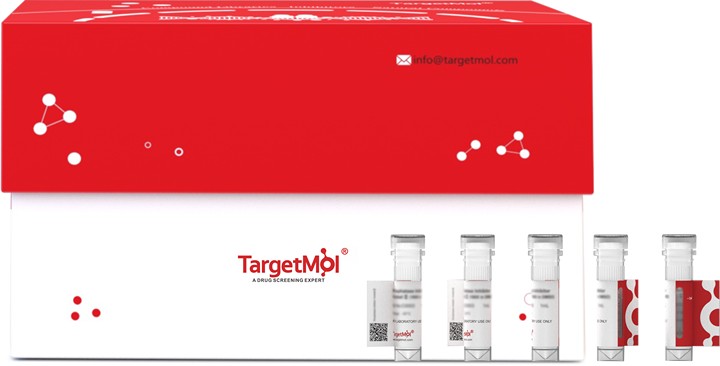 您的购物车当前为空
您的购物车当前为空
SIRP alpha Protein, Human, Recombinant (His & Avi), Biotinylated
一键复制产品信息别名 Tyrosine-Protein Phosphatase Non-Receptor Type Substrate 1, SHPS-1, SHP Substrate 1, MyD-1 Antig, Macrophage Fusion Receptor, Inhibitory Feceptor SHPS-1, CD172 Antigen-Like Family Member A, Brain Ig-Like Molecule with Tyrosine-Based Activation Motifs, Bit
Signal Regulatory Protein α (SIRPα) is a monomeric approximately 90 kD type I transmembrane glycoprotein. The 504 amino acid human SIRPα contains two Ig-like C1-type domains and one Ig-like V-type domain. SIRPα can express in various tissues, mainly on brain and myeloid cells, including macrophages, neutrophils, dendritic and Langerhans cells. It also can detect in neurons, smooth muscle and endothelial cells. SIRPA is an immunoglobulin-like cell surface receptor for CD47. SIRPα acts as docking protein and induces translocation of PTPN6, PTPN11 and other binding partners from the cytosol to the plasma membrane. SIRPα shows adhesion of cerebellar neurons, neurite outgrowth and glial cell attachment. SIRPα engagement generally produces a negative regulatory signal; it may mediate negative regulation of phagocytosis, mast cell activation and dendritic cell activation.

SIRP alpha Protein, Human, Recombinant (His & Avi), Biotinylated
一键复制产品信息Signal Regulatory Protein α (SIRPα) is a monomeric approximately 90 kD type I transmembrane glycoprotein. The 504 amino acid human SIRPα contains two Ig-like C1-type domains and one Ig-like V-type domain. SIRPα can express in various tissues, mainly on brain and myeloid cells, including macrophages, neutrophils, dendritic and Langerhans cells. It also can detect in neurons, smooth muscle and endothelial cells. SIRPA is an immunoglobulin-like cell surface receptor for CD47. SIRPα acts as docking protein and induces translocation of PTPN6, PTPN11 and other binding partners from the cytosol to the plasma membrane. SIRPα shows adhesion of cerebellar neurons, neurite outgrowth and glial cell attachment. SIRPα engagement generally produces a negative regulatory signal; it may mediate negative regulation of phagocytosis, mast cell activation and dendritic cell activation.
| 规格 | 价格 | 库存 | 数量 |
|---|---|---|---|
| 5 μg | ¥ 815 | 6-8日内发货 | |
| 10 μg | ¥ 1,350 | 6-8日内发货 | |
| 20 μg | ¥ 2,260 | 5日内发货 | |
| 50 μg | ¥ 3,980 | 5日内发货 | |
| 100 μg | ¥ 6,130 | 5日内发货 |
产品介绍
| 产品描述 | Signal Regulatory Protein α (SIRPα) is a monomeric approximately 90 kD type I transmembrane glycoprotein. The 504 amino acid human SIRPα contains two Ig-like C1-type domains and one Ig-like V-type domain. SIRPα can express in various tissues, mainly on brain and myeloid cells, including macrophages, neutrophils, dendritic and Langerhans cells. It also can detect in neurons, smooth muscle and endothelial cells. SIRPA is an immunoglobulin-like cell surface receptor for CD47. SIRPα acts as docking protein and induces translocation of PTPN6, PTPN11 and other binding partners from the cytosol to the plasma membrane. SIRPα shows adhesion of cerebellar neurons, neurite outgrowth and glial cell attachment. SIRPα engagement generally produces a negative regulatory signal; it may mediate negative regulation of phagocytosis, mast cell activation and dendritic cell activation. |
| 生物活性 | Loaded Anti-Human SIRPA mAb-Fc on Protein A Biosensor, can bind Biotinylated Human SIRPA-His with an affinity constant of 5.57 nM as determined in BLI assay. (Regularly tested) |
| 研究背景 | Signal Regulatory Protein α (SIRPα) is a monomeric approximately 90 kD type I transmembrane glycoprotein. The 504 amino acid human SIRPα contains two Ig-like C1-type domains and one Ig-like V-type domain. SIRPα can express in various tissues, mainly on brain and myeloid cells, including macrophages, neutrophils, dendritic and Langerhans cells. It also can detect in neurons, smooth muscle and endothelial cells. SIRPA is an immunoglobulin-like cell surface receptor for CD47. SIRPα acts as docking protein and induces translocation of PTPN6, PTPN11 and other binding partners from the cytosol to the plasma membrane. SIRPα shows adhesion of cerebellar neurons, neurite outgrowth and glial cell attachment. SIRPα engagement generally produces a negative regulatory signal; it may mediate negative regulation of phagocytosis, mast cell activation and dendritic cell activation. |
| 种属 | Human |
| 表达系统 | HEK293 Cells |
| 标签 | C-6xHis-Avi |
| 蛋白编号 | P78324 |
| 氨基酸序列 | Glu31-Arg370 |
| 蛋白构建 | Glu31-Arg370 |
| 蛋白纯度 | Greater than 95% as determined by reducing SDS-PAGE. (QC verified) |
| 缓冲液 | Lyophilized from a solution filtered through a 0.22 μm filter, containing 20 mM PB, 150 mM NaCl, pH 7.2. |
| 复溶方法 | Reconstitute the lyophilized protein in distilled water. The product concentration should not be less than 100 μg/ml. Before opening, centrifuge the tube to collect powder at the bottom. After adding the reconstitution buffer, avoid vortexing or pipetting for mixing. |
| 别名 | Tyrosine-Protein Phosphatase Non-Receptor Type Substrate 1, SHPS-1, SHP Substrate 1, MyD-1 Antig, Macrophage Fusion Receptor, Inhibitory Feceptor SHPS-1, CD172 Antigen-Like Family Member A, Brain Ig-Like Molecule with Tyrosine-Based Activation Motifs, Bit |
| 内毒素 | < 0.1 ng/µg (1 EU/µg) as determined by LAL test. |
| 分子量 | 50-80 KDa (reducing condition) |
| 运输方式 | In general, Lyophilized powders are shipping with blue ice. Solutions are shipping with dry ice. |
| 存储 | Lyophilized powders can be stably stored for over 12 months, while liquid products can be stored for 6-12 months at -80°C. For reconstituted protein solutions, the solution can be stored at -20°C to -80°C for at least 3 months. Please avoid multiple freeze-thaw cycles and store products in aliquots. |
计算器
剂量转换
对于不同动物的给药剂量换算,您也可以参考 更多





 还可以
还可以
 |
|